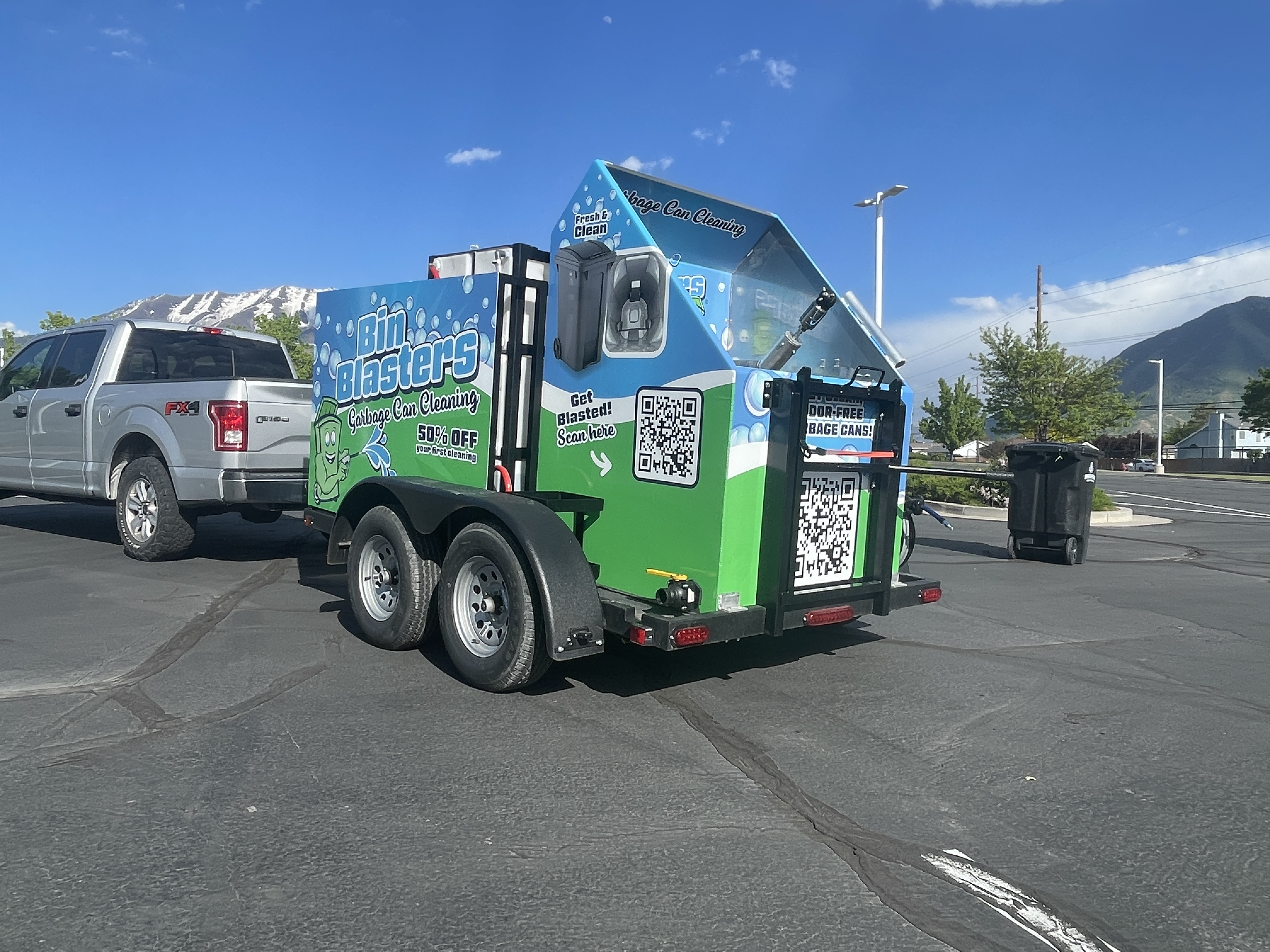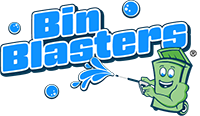Article Summary
- Plan your daily routes by grouping nearby customers to maximize stops and minimize driving time.
- Use route density strategies, like servicing entire blocks, to significantly boost your daily revenue potential.
- Leverage route optimization tools to automate planning and track performance for continuous improvement.
- Schedule services strategically around garbage collection days and customer availability to reduce missed appointments.
- Analyze your route data regularly to identify inefficiencies and refine your approach for maximum profitability.
Let’s Talk About Smart Route Planning
Alright folks, Casey here! Let’s dive into something super important for making serious bank in the bin cleaning biz: smart route planning. When I first started, man, I wasted so much time zigzagging across town. Bin there, done that, got the empty gas tank to prove it! The secret sauce? Thinking like those big delivery companies – pack your stops tight!
Group Nearby Clients Together
This sounds basic, but you’d be surprised how many folks mess it up. Look at your map, see who lives close to each other, and hit them one after another. Don’t drive ten miles east for one bin, then ten miles west for the next. Cluster ’em up! It’s all about minimizing that windshield time and maximizing that blasting time.
Map Dense Service Areas
Focus your marketing efforts (and your driving) on neighborhoods where houses are close together. The less distance between stops, the more bins you can clean in a day. Think cul-de-sacs, tight-knit subdivisions – these are your goldmines. Getting multiple customers on the same street is the fastest way to ramp up your daily earnings. Understanding your territory rights ensures those dense, high-potential areas are yours alone to serve, without internal competition.

Follow Garbage Collection Routes
Why reinvent the wheel? Your local garbage trucks often run pretty efficient routes already [3]. Knowing their schedule helps you plan yours. You want to clean bins after they’ve been emptied, right? So, figure out the collection days for different areas and plan your service routes to follow suit. This makes logistics way simpler.
Track Daily Miles Covered
Keep an eye on your odometer. Knowing how many miles you’re driving per route, or even per bin, helps you see if your planning is actually working. If those miles start creeping up without a corresponding jump in revenue, it’s time to rethink your path. Data doesn’t lie!
Pro tip: Use a simple spreadsheet or a dedicated app from day one to log addresses and group them visually on a map. Seeing the clusters helps solidify the most efficient path in your mind.
Why Do Short Routes Save You Money?
Okay, so we’ve talked about how to plan smarter routes. Now, let’s get down to the nitty-gritty: why this makes such a huge difference to your bottom line. Trust me, this isn’t just about saving a few pennies; it’s about fundamentally changing your earning potential.
Cut Fuel Costs Fast
This one’s a no-brainer. Less driving equals less fuel burned. Fuel is one of your biggest variable costs, especially pulling our awesome Bin Blasters trailers. Every mile you don’t drive is money straight back into your pocket. Optimizing routes is the single most effective way to slash that fuel bill. Think about it – saving even 10-15 miles a day adds up incredibly fast over a month or year.
Service More Bins Daily
Time is money, my friends! When you’re not stuck in traffic or driving unnecessary distances, you have more time to actually clean bins. Tighter routes mean you can realistically fit more customers into the same workday. Instead of 20 bins, maybe you can hit 25 or 30. That’s a massive jump in revenue without working longer hours. It’s about working smarter, not harder (though we definitely work hard too!).
Maximize Revenue Per Mile
This ties it all together. You want every mile driven to generate as much income as possible. Long, inefficient routes might have you driving 5 miles between $10-$15 cleanings. A dense, optimized route could have you driving half a mile (or less!) between those same cleanings. Your revenue per mile skyrockets when stops are clustered. That efficiency is what separates the folks just getting by from the ones really crushing it.
Pro tip: Calculate your average revenue per mile driven each week. Set a goal to increase it consistently through better routing – it’s a great motivator!
Here’s How Route Software Drives Success
Now, you can plan routes manually with maps and spreadsheets, especially when you’re starting out. I did! But as you grow, technology becomes your best friend. Investing in a good route optimization system isn’t just a cost; it’s an investment that pays for itself ridiculously fast. Let’s break down how.
Plan Efficient Daily Routes
Modern route optimization software uses fancy algorithms (way smarter than my old paper maps!) to automatically calculate the most efficient sequence for your stops [5]. You plug in the addresses, maybe some constraints like time windows, and boom – it spits out the best path. This saves you hours of planning time and ensures you’re not missing obvious efficiencies.
- Input customer addresses for the day.
- Set parameters like start/end points and vehicle capacity [5].
- Let the system generate the optimal sequence.
Track Service Completion Times
Knowing how long each stop actually takes is crucial. A route optimization system often includes features for drivers to mark jobs as complete, logging the time. This helps you understand your real-world capacity and identify if certain stops or areas consistently take longer than expected. Maybe Mrs. Jones has three super-nasty bins every time – good to know for future planning!

Monitor Driver Performance
If you’ve got multiple trucks and drivers, a route optimization system is essential for oversight. You can often track vehicle locations in real-time, see if drivers are sticking to the planned routes, and monitor progress throughout the day [6]. This isn’t about being Big Brother; it’s about ensuring efficiency and accountability across your fleet. It helps identify training needs or reward top performers. Check out how we support our franchisees at Bin Blasters Franchising.
Optimize Future Planning
Good software doesn’t just plan for today; it helps you plan better for tomorrow. By analyzing historical route data, completion times, and driver feedback, the system (and you!) can make smarter decisions over time [6]. You can adjust territories, refine time estimates, and even predict demand more accurately. It turns routing from guesswork into a data-driven strategy.
Pro tip: Choose a route optimization system that integrates with your scheduling and billing software. This streamlines your entire workflow, saving even more time and reducing errors.
Let’s Master Neighborhood Coverage
Alright, let’s talk about dominating a neighborhood – Bin Blasters style! This is where that UPS-style efficiency really kicks in. It’s not just about cleaning one bin here and one bin there; it’s about becoming the go-to service for entire streets and subdivisions. Maximum density equals maximum profit!
Target Connected Streets
When you get a new customer, immediately look at their neighbors. Use those rolling billboards (your awesome truck and trailer!) and bin hangers to let everyone nearby know you’re in the area. Focus your efforts on streets that connect, creating a tight service web rather than scattered dots on a map. Think loops, not lines!
Build Route Density
This is the core concept. Your goal is to have multiple clients on the same street, or even right next door to each other. Imagine pulling up, blasting three bins without moving the truck, then driving 50 feet to hit two more. That’s peak efficiency! It requires consistent marketing in your target zones, but the payoff is huge. Building dense routes is how you can realistically service a high volume of clients in a single day. Learn more about our approach to the market by reading about Bin Blasters Franchising.
Convert Entire Blocks
Don’t be shy! Offer a small discount for neighbors who sign up together. Make it easy for people to say yes when they see you cleaning next door. When you service a bin, take 30 seconds to drop hangers on the five closest houses. It’s amazing how quickly you can turn one customer into five or six on the same block. That’s how you build a fortress of recurring revenue, one clean bin at a time.
Pro tip: Create ‘neighbor specials’ or referral bonuses specifically designed to encourage sign-ups within the same immediate area. Make it a win-win for everyone.
Here’s When to Schedule Services
Timing is everything, right? Just like you wouldn’t show up to a party three hours early (well, maybe I would if there’s good food), you need to schedule your bin cleaning strategically. It impacts efficiency, customer satisfaction, and even your ability to complete the route.
Match Garbage Collection Days
This is the golden rule. Customers want their bins cleaned shortly after they’ve been emptied by the garbage truck. Trying to clean a full, heavy bin is messy, inefficient, and sometimes impossible with the equipment.
Here’s a simple approach:
- Identify the garbage collection day for each service zone.
- Schedule your cleaning route for that zone on the same day or the day after collection.
- Communicate this clearly to customers so they leave their bins out.
Plan Around Peak Times
Consider traffic patterns and school zones. You don’t want your big rig stuck in rush hour or trying to navigate streets clogged with school buses if you can avoid it. Sometimes starting routes super early or focusing on residential areas during mid-day can save a lot of headaches and delays. Avoiding peak congestion times directly translates to more service time.
Organize Weekly Zones
Instead of trying to cover your entire territory every day, break it down into manageable zones. Assign specific days of the week to specific geographic areas (e.g., North side on Mondays, Downtown on Tuesdays). This creates predictability for you and your customers and makes route planning much simpler. It aligns perfectly with matching garbage collection days too! You can see the kinds of services we offer regular folks on binblasters.com.
Schedule Return Visits
What happens if a customer forgets to leave their bin out? Or if a bin is unexpectedly full? Have a plan! Maybe you circle back at the end of the route if it’s nearby, or perhaps you schedule them for the following week or offer a slight credit. A good route optimization system can help manage these exceptions without derailing your whole day.
Pro tip: Use automated reminders (email or SMS) sent the day before service to remind customers to leave their bins accessible. This drastically reduces missed stops.

Conclusion: Route Optimization That Works
So, there you have it! Route optimization isn’t just some fancy buzzword; it’s the engine that drives profitability in the mobile bin cleaning world. By thinking strategically about where you drive and when you service, you cut costs, boost efficiency, and ultimately put more money in your pocket each day. It’s about maximizing every minute and every mile.
Remember those early days I mentioned? Wasted fuel, missed opportunities… I learned the hard way so you don’t have to! At Bin Blasters, we bake this efficiency mindset into our franchise system, providing the plans and support to help you build dense, profitable routes from the get-go. We focus on clustering stops tightly, leveraging smart scheduling, and using data to constantly improve. Automated payment systems are another part of that efficiency, saving time, improving cash flow, and keeping your business running smoothly.
It’s about turning those stinky bins lining every street into a streamlined, money-making operation. Ready to stop driving in circles and start building a seriously profitable business? Let’s talk about how Bin Blasters can help you blast your way to success. Reach out and contact Bin Blasters Franchising today!
Frequently Asked Questions
- Q: How much can I really save with route optimization?
- A: Savings vary, but optimizing routes significantly cuts fuel costs (often one of the largest expenses) and allows you to service more customers per day, directly increasing revenue potential without necessarily increasing work hours.
- Q: Do I need expensive software to optimize routes?
- A: You can start with manual planning using maps, but as you grow, route optimization software becomes invaluable. It automates complex calculations, saves planning time, tracks performance, and often pays for itself quickly through efficiency gains.
- Q: What’s the best way to handle customers spread far apart?
- A: Focus marketing efforts on building density in specific zones first. While you might service some outliers, prioritize grouping customers geographically to minimize travel time between stops for the bulk of your route.
- Q: How important is scheduling around garbage collection days?
- A: It’s critical. Cleaning bins right after they are emptied is most efficient for your equipment and what customers expect. Aligning your service schedule with local trash pickup is a fundamental part of effective route planning.
- Q: Can a route optimization system help if I’m the only driver?
- A: Absolutely! Even for a single operator, it saves significant planning time, ensures you’re taking the most efficient path, helps track mileage for taxes, and provides data to improve your strategy as you grow.


